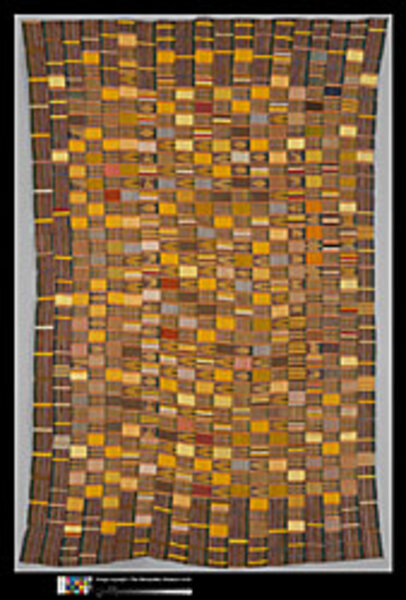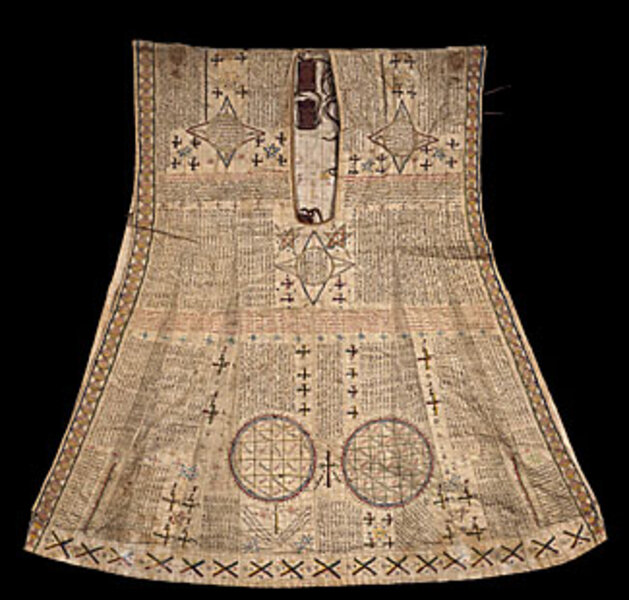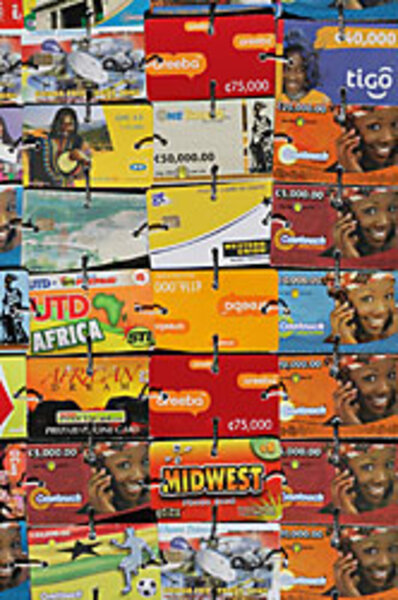Traditional African textiles inspire modern art
Loading...
Two extraordinary parallel exhibits at the Grey Gallery at New York University and the Metropolitan Museum illuminate what many Africans themselves view as their supreme art: textile design. The Western world's on-again, off-again love affair with traditional African arts during the past century has been quicker to value African masks and sculpture than artful textiles, perhaps because textiles are associated with "mere" clothing. These exhibits build a case for the way the most refined and imaginative textiles Africans have worn for centuries create a sense for the wearer and onlookers of perceiving fine art in dancing motion.
Both exhibits also concentrate on how traditional West African textile designs have inspired modern African artists who use materials other than woven silk or cotton to create new art that references past weaving traditions while reflecting the present. This startling juxtaposition between the past and present in thinking about textile patterns is sweepingly showcased in the Grey Art Gallery's "The Poetics of Cloth: African Textiles/Recent Art."
A hand-woven cotton wrapper from the Ewe people of Ghana is a sumptuous presentation of the polyrhythmic weaving style called "kente." If a textile could fancifully sing about itself, this cloth would sing: "I've got rhythm, who could ask for anything more?" "Kente for the Space Age" by Rikki Wemega-Kwawu creates a parallel field of color-clashing, asymmetrically skewed patterns – but does so using prepaid African phone cards linked by plastic twine.
But African textiles, ancient or contemporary, created from cotton or plastic, are more than just rhythmically busy designs in bright colors. Patterns often suggest moral stories and proverbial wisdom through evocative visual patterns. A stirring example found in the Metropolitan Museum's exhibit, "The Essential Art of African Textiles: Design Without End" is a cotton tunic created by a Hausa artist who transformed it into a warrior's uniform, assuring invulnerability by attaching magical amulets and covering its surface with sage scripture from the Koran.
While some 21st-century variations on traditional African textiles have less clearly didactic story lines, all invite lingering gazes at complexly interlocking patterns. For those unable to attend the exhibits, two valuable catalogs are worth seeking out, with the Grey Gallery's "The Poetics of Cloth" catalog being the most essential, thanks to a revealing essay by the Ghanaian weaver Kofi Anyidoho linking his weaving to music.
• "The Poetics of Cloth" ends Dec. 6, 2008; "The Essential Art of African Textiles" runs through March 29, 2009.







